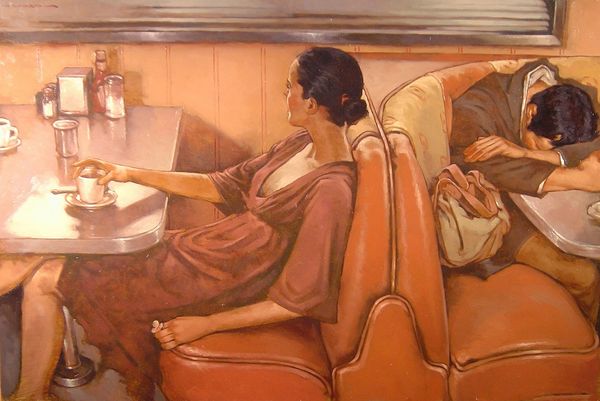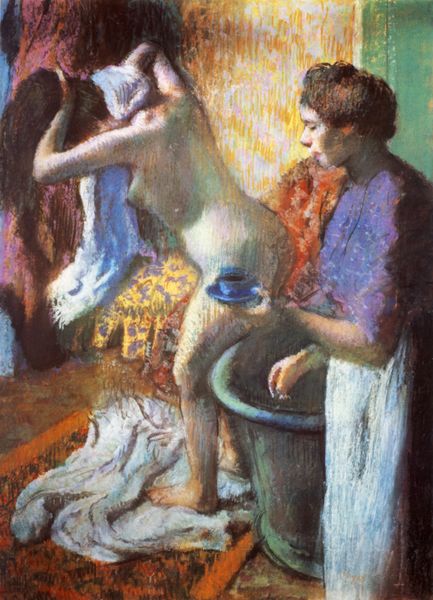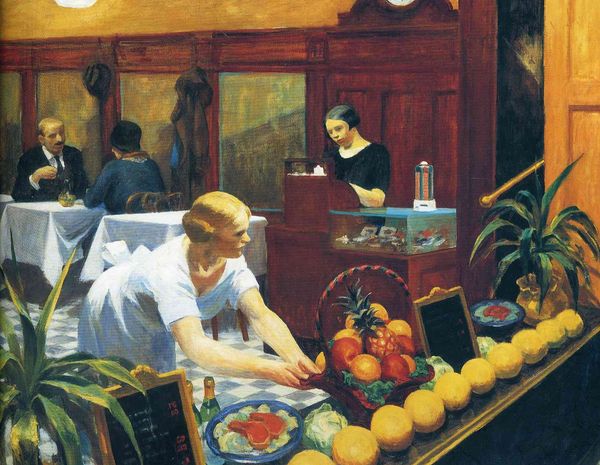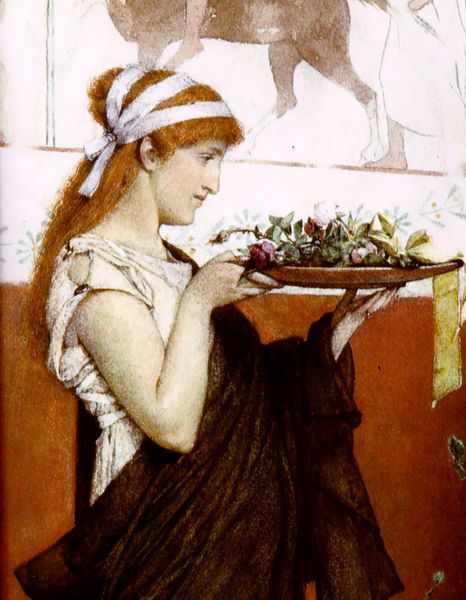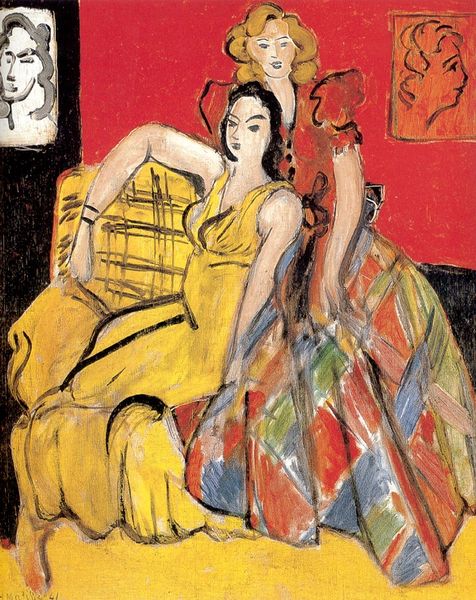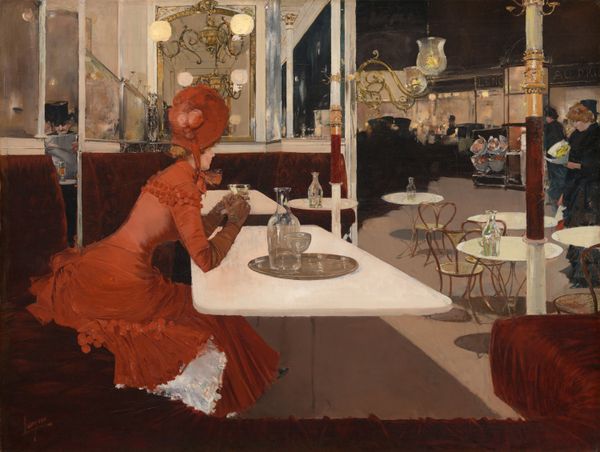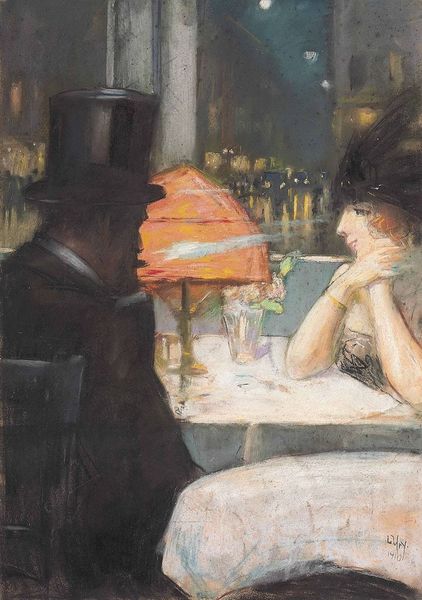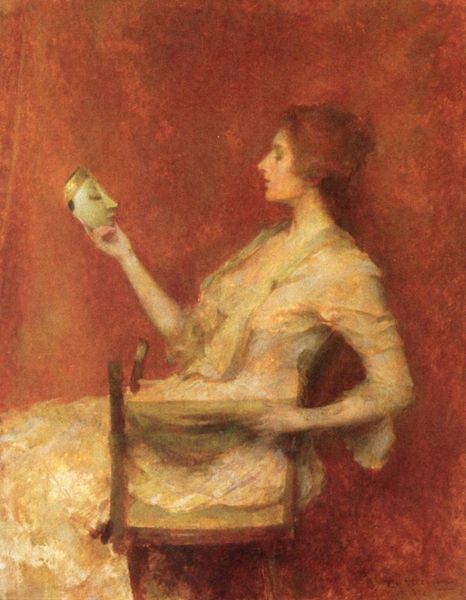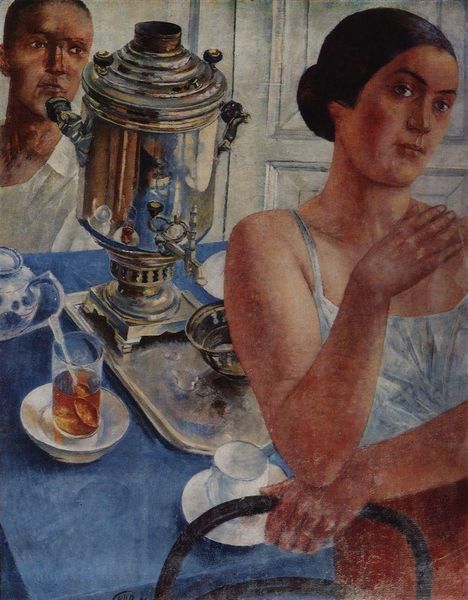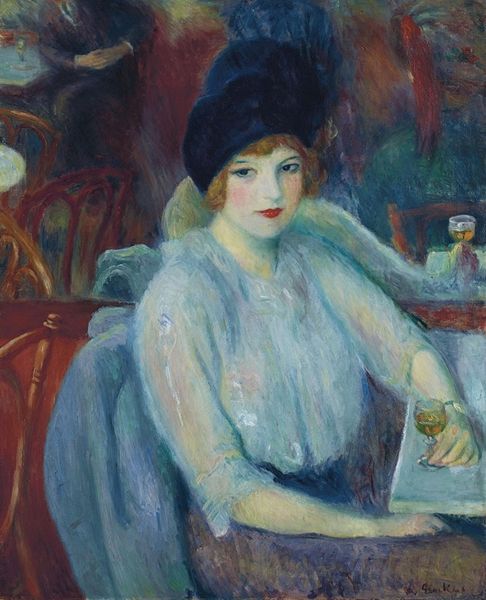
painting, oil-paint
portrait
gouache
painting
oil-paint
oil painting
cityscape
genre-painting
modernism
watercolor
realism
Copyright: Public domain
Editor: This is William Glackens’ "Soda Fountain," painted in 1935 using oil paint. There's a wonderful mundanity to it. What particularly strikes you about this piece? Curator: What I see is a document of class and labor through the very materials represented. Consider the gleaming metal soda fountain: it speaks to mass production and consumerism, integral to 1930s America. What does the artist's choice to depict this scene in oil paint communicate about its perceived value? Editor: I guess, traditionally, oil painting would be for ‘high art’, so is he elevating a common scene? Curator: Precisely. By using oil paint, historically associated with portraits of the wealthy or grand historical narratives, Glackens elevates the everyday experiences of these patrons, blurring the lines between high art and depictions of working class leisure. The painting asks: who gets immortalized in oil, and what labor sustains these moments? The soda jerk's labor, for instance, directly facilitates the ladies' leisurely consumption. Do you see that reflected in the painting? Editor: Definitely, it's like a moment frozen in time, capturing a specific point of social and economic activity. The composition, the colors – it’s all telling a story about that relationship between the workers and the patrons in the setting. Curator: Exactly! And understanding this, we get to consider Glackens’ choices beyond just aesthetic pleasure and begin to interrogate the social framework it depicts through the means of its production. Editor: Thank you! It is interesting to consider this image as a product of its context.
Comments
No comments
Be the first to comment and join the conversation on the ultimate creative platform.

